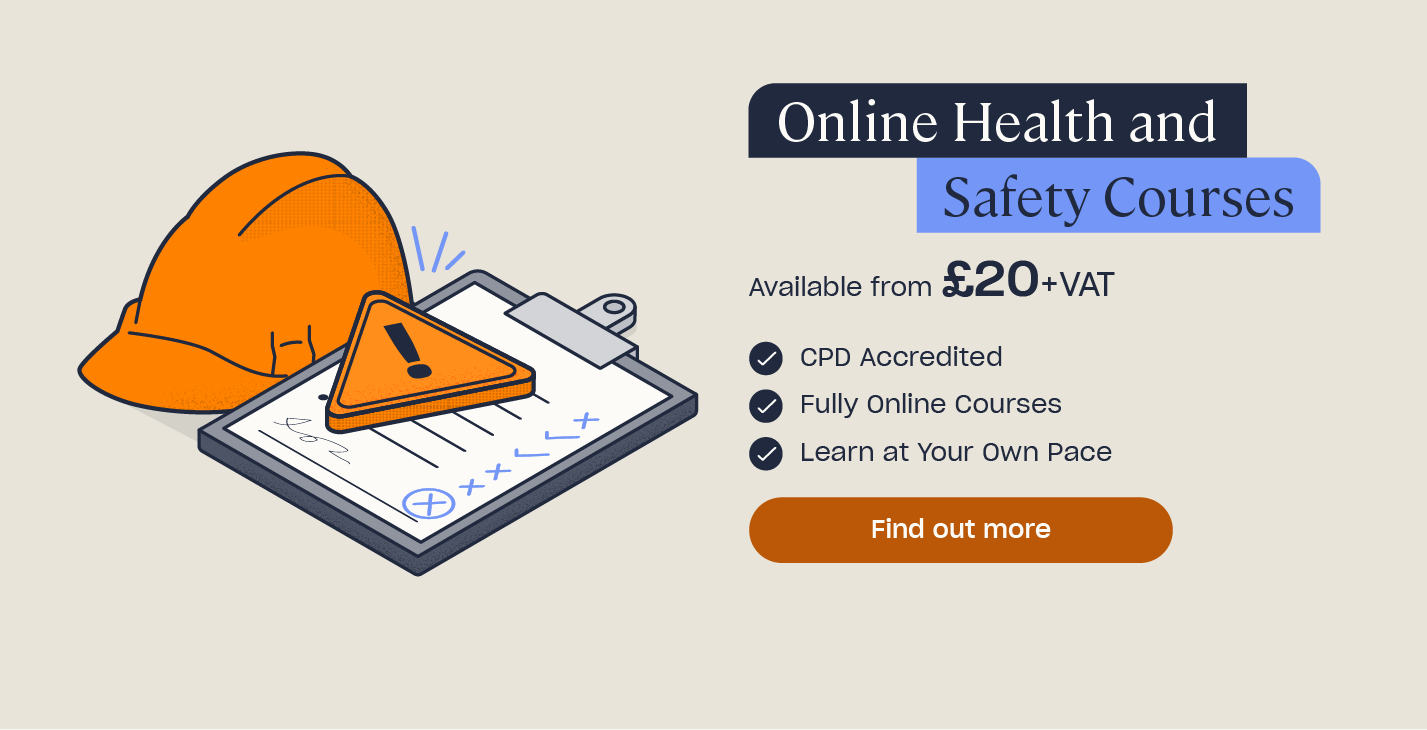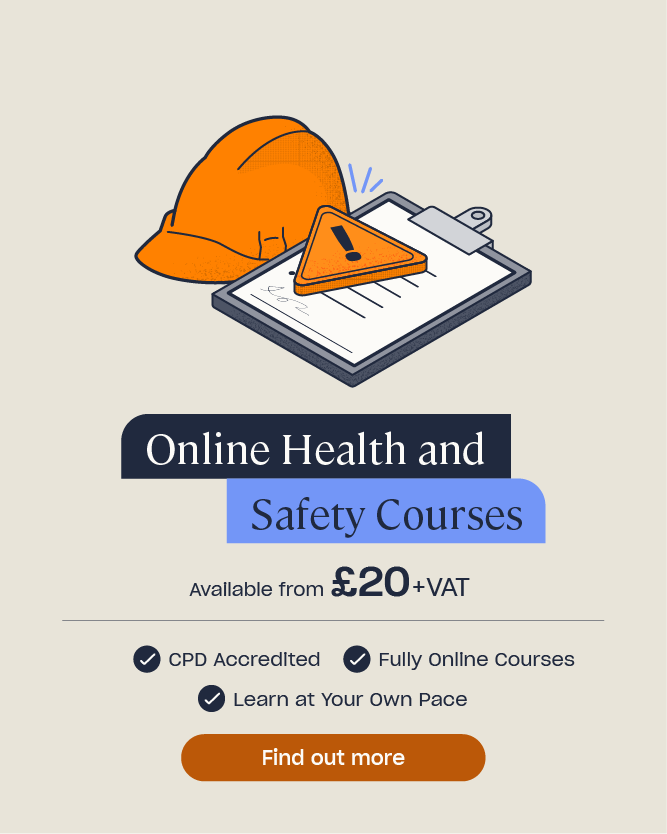Workplace Pregnancy Risk Assessment: Health and Safety Guidance
In most cases, pregnancy does not prevent you from continuing to work. However, it is important to be aware of the potential risks associated with working while pregnant. There are laws in place for employers to help protect pregnant women and new mothers from risks to their health and safety.
In this article, we will explain what a pregnancy risk assessment is and why it is important in the workplace, as well as what it should include. We will outline the laws regarding pregnancy in the workplace and the potential risks to health and safety. Finally, we will provide a free workplace pregnancy risk assessment template and a completed example.
Did you know…
The Worker Protection Act 2023 changes came into effect for all businesses in October 2024. The Act places a new legal obligation on employers to take reasonable steps to prevent sexual harassment in the workplace. Our Sexual Harassment Training course helps businesses comply with their new responsibilities.
What Do I Need to Know About a Workplace Pregnancy Risk Assessment?
In the workplace, a pregnant employee is more susceptible to injury, both to themselves and their unborn child. Therefore, it is essential that control measures are put in place.
Once an employee finds out that they are pregnant, they should inform their employer in writing. The employer then has a legal duty to conduct a risk assessment. Having a workplace risk assessment for a pregnant employee is crucial to ensure their health and safety at work. This also applies to women who have become new mothers within the past six months and women who are breastfeeding.
Pregnancy workplace risk assessments are fundamental as they ensure that employers review their existing general risk management controls. The aim of a workplace pregnancy risk assessment is to ensure that the health and safety of the pregnant employee or new mother is considered and that the necessary control measures are being implemented in the workplace.

The risk assessment process should involve talking with the pregnant employee or new mother to see if there are any conditions or circumstances relating to their situation that could affect their work, or if they have any concerns about continuing their work. The employer must also take into account any recommendations given by the individual’s doctor or midwife.
What are the Laws Regarding Workplace Pregnancy?
There are a number of laws and regulations that are in place to ensure the health and safety of employees that are pregnant or new mothers. Each regulation places different duties on employers, these include:
The Management of Health and Safety at Work Regulations 1999 (MHSW) – Under regulations 16 to 18, employers are required to manage the risks to pregnant employees and new mothers. Employers must also follow advice around night working and if it will affect the health of pregnant employees. In addition, it explains the employer’s legal duties once they are notified that an employee is pregnant, is breastfeeding or has given birth within the last six months.
The Workplace (Health, Safety and Welfare) Regulations 1992 – Under regulation 25, employers are required to provide a suitable place to rest for employees who are pregnant, breastfeeding or new mothers.
The Equality Act 2010 – Under this Act, employers cannot dismiss or discriminate against an employee because they are pregnant, a new mother, on maternity leave or breastfeeding.
Employers have a legal duty to ensure the health and safety of their employees. Therefore, where there are risks to a pregnant employee or new mother, the employer should take steps to remove or minimise them by changing the work. If this is not possible, the employer should arrange suitable alternative work. If alternative work cannot be found, the employee should be suspended on full pay for as long as necessary.

Health and Safety Risks for Pregnant Women at Work
In the workplace, there are many health and safety risks for pregnant employees or new mothers. Some workplace risks can become more dangerous to a pregnant woman or new mother, other risks arise due to the pregnancy.
Symptoms experienced during pregnancy that can pose risks to health and safety include the following:
- Reduced agility, speed, reach or balance.
- Fatigue and exhaustion.
- Stress and high blood pressure.
- Severe morning sickness.
Risks to the employee and their unborn child that arise from work activities and/or the workplace include the following:
Manual handling – Pregnant employees should not lift or carry heavy loads, this should also be considered when returning to work after giving birth.
Posture and position – Postural problems can occur at any stage during the pregnancy and some may not become apparent until after giving birth. Therefore, pregnant employees and new mothers should not sit or stand for long periods of time.
Working hours – Working hours may have to be adjusted as the pregnant employee may need to leave due to medical appointments. They may also need to start and finish at different times to avoid rush hour traffic. The employee may also require more frequent breaks to rest.

Working conditions – The safety and welfare of the pregnant employee when working at height or lone working must be considered. In addition, the conditions such as temperature of the workplace, noise and any vibrations caused by machinery should be included.
Display screen equipment (DSE) – Pregnant employees should avoid sitting or standing for long periods of time. There are also associated risks when pregnant, such as reduced mobility, increasing in size and aches and pains.
Welfare issues – Suitable facilities for rest are essential, as well as facilities for expressing and storing breastmilk.
Slips, trips and falls – Trailing cables or potential trip hazards can cause serious harm to the pregnant employee and their unborn child.
Personal protective equipment (PPE) – PPE is often not designed for pregnant women, therefore, alternative PPE or different sizes of PPE should be considered.
Hazardous substances – Exposure to hazardous substances can cause harm to the mother and their unborn child, so should be minimised as much as possible. This can include pesticides, cleaning chemicals and lead.
Biological agents – Exposure to bacteria and viruses can cause harm to the mother and their unborn child, so should be minimised as much as possible. This includes exposure to animals and illnesses. Extra PPE could be used to reduce the risk.
This is not an exhaustive list and employers must consider the risks specific to their workplace and work activities.
Free Pregnancy at Work Risk Assessment Template

Here we have provided a free template of a pregnancy risk assessment for you to download and use in your workplace.
The risk assessment template covers the employee’s basic information, the different hazards and the control measures that should be implemented.
Risks may change throughout the pregnancy and after. Therefore, risk assessments should be regularly monitored, reviewed and kept up to date. Pregnancy workplace risk assessments may also look different and include different things depending on the workplace they are intended for.
You can use this template to guide your own risk assessments as well as to understand and control any potential risks in the workplace. We have also provided a completed example to show you how to use the template.
Workplace pregnancy risk assessments help to ensure the health and safety of pregnant employees, new mothers and women who are breastfeeding. Laws and regulations place legal duties on employers to protect pregnant women and their unborn child from work-related risks. There are a multitude of risks that should be considered in the risk assessment and control measures should be implemented.
Further Resources:
- Risk Assessment for Working from Home
- DSE Workstation Assessment and Checklist
- Workplace Health & Wellbeing Quiz
- HR Guide to Health & Safety – PDF Template
- Risk Assessment Quiz
- Health and Safety Quiz
- Health & Safety Training Courses
- Menopause Awareness Training Course







